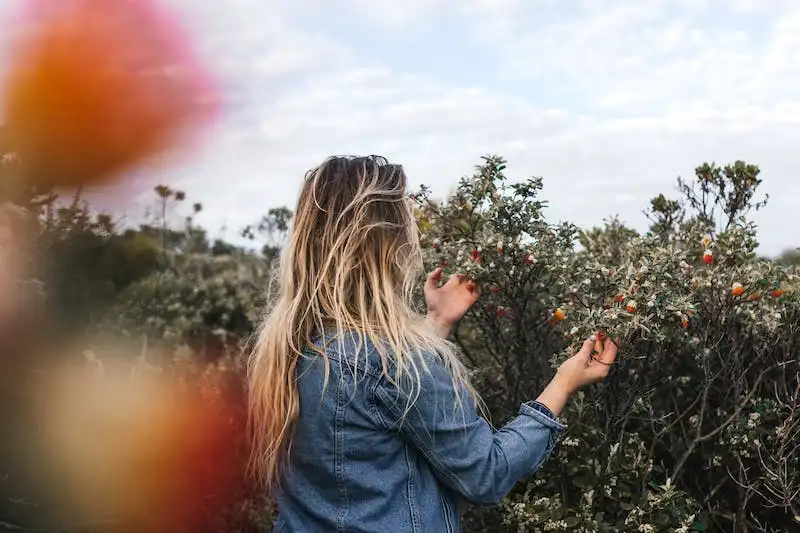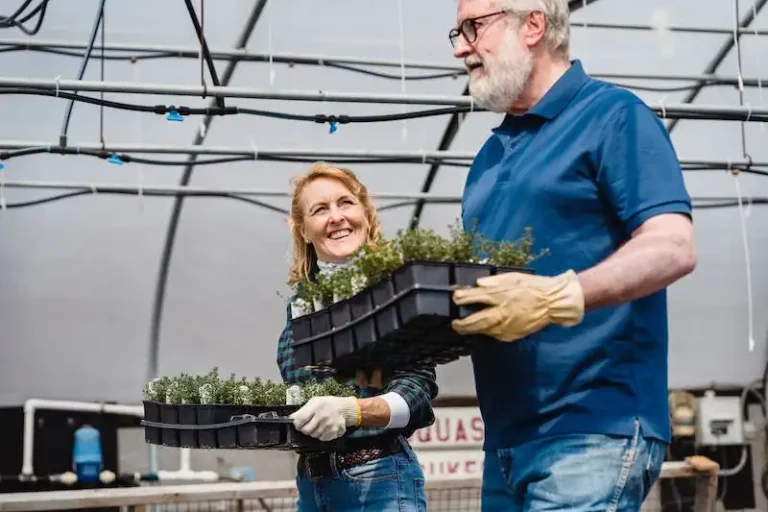Bluebells are charming flowers that can bring beauty to any roadside or small patch of ground. Their bell-shaped blossoms, in shades of blue and purple, signify the end of winter and the arrival of spring. Plant recommendations for bluebells vary depending on where you are located, but for the UK, the native English bluebell (Hyacinthoides non-scripta) is a popular choice.
Bluebells can take a few years to establish and fully develop, but once they do, their growth habit is impressive. They spread easily, forming a dense ground cover that can out compete other plants. Bluebells are not invasive in nature’s sense, but they can be challenging to control in a defined garden bed.
When planting bluebells, the matter of bulbs and seeds arises. Bulbs are an easier and more reliable way to cultivate bluebells, as they ensure a higher success rate. For example, bluebell bulbs can be planted in the autumn, and you can expect them to start blooming the following spring. Planting bluebell seeds is also possible, but it requires more time and patience, as they need to be sown in succession to guarantee a continuous blooming calendar.
Bluebells can be found in many areas across the world. For example, in the United States, the Virginia bluebell (Mertensia virginica) is native and can be a great addition to any woodland or natural area. However, it’s important to note that Spanish bluebells (Hyacinthoides hispanica) can be invasive and out-compete native plants, so care should be taken to manage their spread.
Regardless of the variety, bluebells make a delightful addition to any garden or natural space. Their vibrant colors and graceful blooms offer a feast for the eyes, while their nectar and pollen serve as an important food source for bees and other pollinators. If you want to attract more wildflowers, bluebells are a great choice to consider. To ensure their success, make sure to provide them with well-drained soil, partial shade, and appropriate management practices, such as cutting back the foliage after flowering is finished.
How to Grow Virginia Bluebells
Virginia Bluebells, also known as Mertensia virginica, are native to North America and are a great addition to any garden. These beautiful blue flowers can be found growing wild in woods and other natural areas, but they can also thrive in a garden setting. If you want to plant Virginia Bluebells in your garden, here’s what you need to know:
- Choose the right location: Virginia Bluebells prefer partial shade or dappled sunlight. They can tolerate full sun, but it’s recommended to provide some shade, especially in hot climates. They also prefer moist, well-drained soil.
- Plant in the autumn: Bluebells can be planted in either the spring or the autumn, but planting them in the autumn will give them a head start and help them establish before the growing season.
- Prepare the soil: Before planting, prepare the planting area by removing any weeds or grass. Virginia Bluebells have a deep root system, so loosen the soil to a depth of at least 12 inches to allow the roots to grow freely.
- Plant the seeds: Virginia Bluebells can be grown from seed. Scatter the seeds liberally over the planting area and lightly cover them with soil. Keep the soil consistently moist until the seeds germinate.
- Watch them grow: Virginia Bluebells typically take about 2-3 years to reach maturity and start flowering. During this time, they will form a carpet-like ground-cover of foliage. Once established, they will self-seed and create a beautiful display of blue flowers year after year.
- Control invasive species: Virginia Bluebells can coexist with other plants, but they may be out-competed by more aggressive species. Keep an eye out for invasive plants and remove them to allow the bluebells to thrive.
- Enjoy the flowers: When the weather warms up in late spring, Virginia Bluebells will start to bloom. The flowers are usually a beautiful shade of blue, but can sometimes be pink or white. Cut the flowers for a beautiful bouquet or enjoy them in the garden.
Remember, Virginia Bluebells are a native species and are an important part of the ecosystem. By planting them in your garden, you are providing valuable habitat for pollinators and other wildlife. Enjoy the beauty of these flowers and learn more about growing wildflowers in your garden. Subscribe to our RSS feed for plant recommendations and gardening tips!
When Where to Plant Virginia Bluebells
If you’re interested in cultivating Virginia Bluebells (Mertensia virginica), it’s important to know when and where to plant them to ensure their success. These beautiful wildflowers are native to the woodland areas of eastern North America, where they can be found blooming in profusion during the springtime.
Virginia Bluebells are typically planted by sowing seeds in the fall or early spring. The seeds should be planted just below the surface of the ground, about 1/4 inch deep, as these plants prefer a bit of darkness to germinate successfully. You can sow the seeds directly in their final growing location, as they don’t transplant well due to their delicate root systems.
When choosing a location for your Virginia Bluebells, look for an area that receives morning sunshine and partial shade in the afternoon. These plants thrive in woodland settings where they can benefit from the dappled light that filters through the trees. The soil should be moist and well-draining, as they don’t tolerate waterlogged conditions.
Virginia Bluebells have a natural spreading habit and will self-seed in their preferred growing conditions. For gardeners who want to enjoy more control over the location and placement of the plants, you can also purchase bulbs or potted plants from a reputable source. This allows you to plant them where you desire and manage their growth more effectively.
As with any plant, proper care and maintenance are essential for Virginia Bluebells. Keep the soil consistently moist during the growing season, especially during dry periods. Mulching around the plants will help retain moisture and suppress weed growth.
Although Virginia Bluebells are fairly self-sufficient once established, it’s a good idea to feed them with a balanced fertilizer in early spring. This will provide the necessary nutrients for healthy growth and abundant flowering. Keep in mind that these plants are much more successful when allowed to naturalize and spread on their own.
Virginia Bluebells are a great addition to any garden, and their blooming period can span about six weeks. They make a lovely carpet of pointed, blue flowers which turn pinkish as they age, creating a beautiful succession of colors. These plants also attract pollinators such as bees and butterflies, making them a valuable addition to any wildlife garden.
In summary, when and where to plant Virginia Bluebells can depend on your preferences and the conditions in your garden. Whether you choose to sow seeds or purchase bulbs, providing them with the right amount of sunlight, well-draining soil, and proper care will result in a stunning display of these native wildflowers in your garden.
How to Grow Virginia Bluebells Throughout the Season
If you’re a fan of beautiful flowers, there’s no better sight than bluebells blooming across a garden or roadside. Virginia bluebells (Hyacinthoides non-scripta) are a particularly stunning variety that can add a touch of natural beauty to any space. Whether you’re cultivating bluebells for their aesthetic appeal or as a food source for pollinators, this guide will provide you with all the information you need to successfully grow them throughout the season.
Plant Recommendations:
Bluebells are native to woodlands in Europe and bloom from April to May. They are hardy in USDA zones 3 to 8, so they can be grown in a variety of climates. When choosing bluebell plants, look for those sourced from a reputable seed supplier to ensure the best quality. You can also sow bluebell seeds directly into the ground, but keep in mind that it may take up to six years for the plants to fully establish and bloom.
Planting:
Bluebells prefer partial shade, so choose a location in your garden that receives morning sunshine but is shaded in the afternoon. They also thrive in rich, well-draining soil. Before planting, make sure to prepare the ground by removing any weeds or grass and loosening the soil. Plant the bluebell bulbs or seeds at a depth of about 2 inches, spacing them approximately 6 inches apart.
Care and Maintenance:
Once the bluebells are planted, they require minimal care. Water them regularly during the growing season, particularly during dry periods. However, be careful not to overwater, as bluebells prefer slightly moist soil. They are relatively low-maintenance and do not require fertilizer.
Managing Invasive Species:
Bluebells can be invasive in some areas, so it’s important to monitor their growth and take appropriate action if necessary. If you notice that the bluebells are spreading too rapidly and crowding out other plants, you may need to thin them out or remove some bulbs.
Enjoying the Blooming Season:
Once your bluebells are fully established, you can sit back and enjoy their stunning display. The combination of their blue-purple flowers and pointed green leaves creates a picturesque scene in any garden. Virginia bluebells also attract bees, butterflies, and other pollinators, making them a valuable addition to any ecosystem.
Conclusion:
Cultivating Virginia bluebells is a rewarding experience that can bring natural beauty and wildlife to your garden. With the right planting and care, you can enjoy these lovely flowers throughout the blooming season. Whether you choose to grow them as a ground-cover or in a miniature woodland, bluebells will surely captivate anyone who sees them.




